
Still tied to the folklore of Lara Jonggrang from Prambanan Temple , Ratu Boko Palace is said to be the home of Lara Jonggrang's father. However, there is much more to unpack from this allegedly royal palace. I said “allegedly” because the guide who accompanied us during the tour mentioned another archeological site called Liyangan which is located about two hour from yogyakarta. The site, which has been buried for centuries due to a massive volcano eruption from Mt. Merapi is suspected to be the actual royal’s palace instead of Ratu Boko.All things considered, Ratu Boko Royal Palace is a magnificent complex which witnessed a multi-religious ancient civilization during the 8th to 9th century.
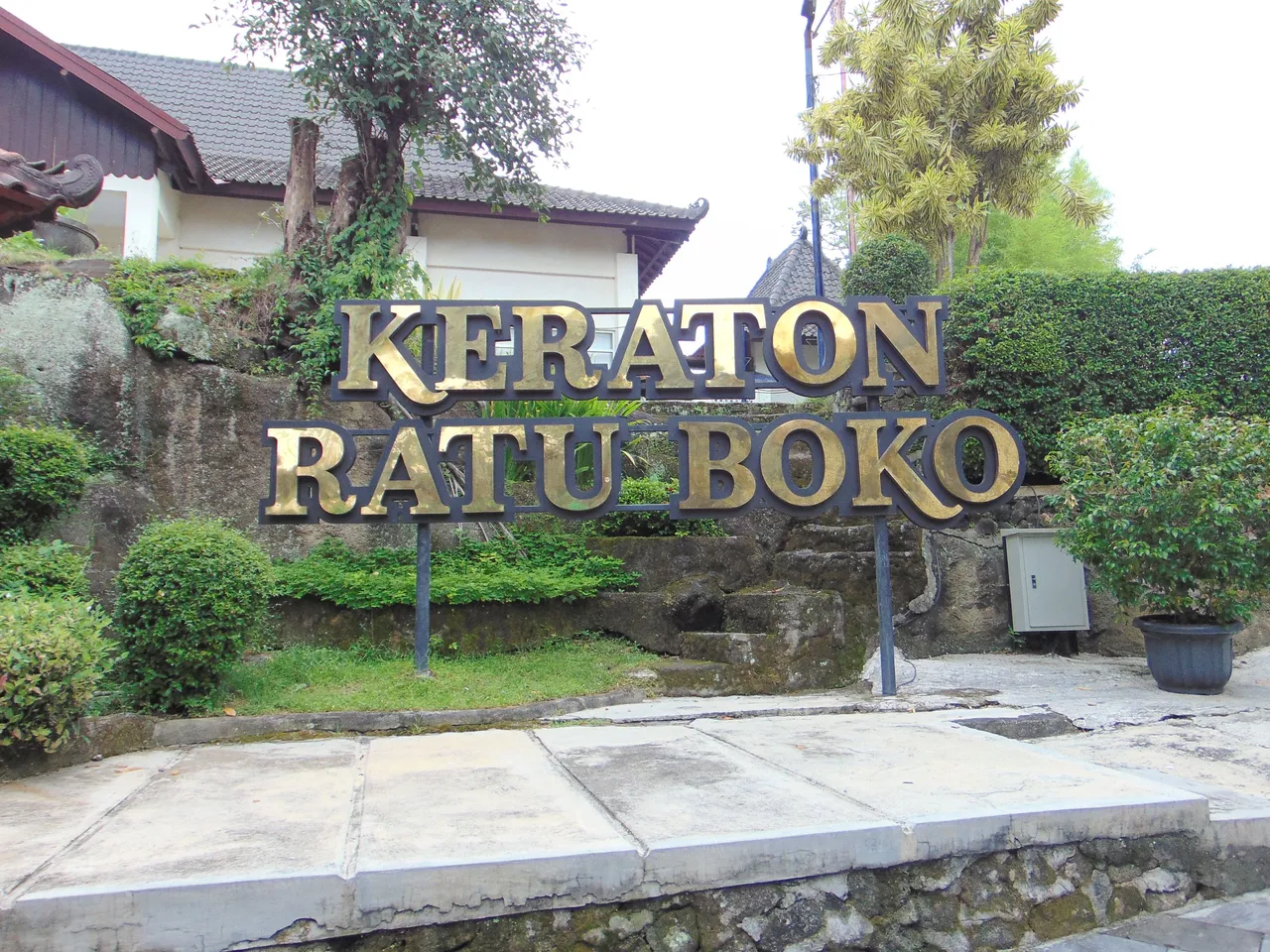
Our journey started quite late. The rain was ready to pour down but it didn’t stop both of us, my friend and I, from exploring this archeological site. Many come to this place with a mission to take pictures during the sunset, but I come with a different mission; I need to conclude all of my journey exploring the ancient mataram kingdom.
My friend had never been to the place. She was a native but only heard stories and folktales at school about the surrounding complex. That was why she was quite excited about the place. We reached the complex at around 3PM just a few hours before the place was about to close. Like usual, we had to scan our vaccination card and get a temperature check. Then, I paid the entrance fee which is 40.000IDR for the domestic tourist.
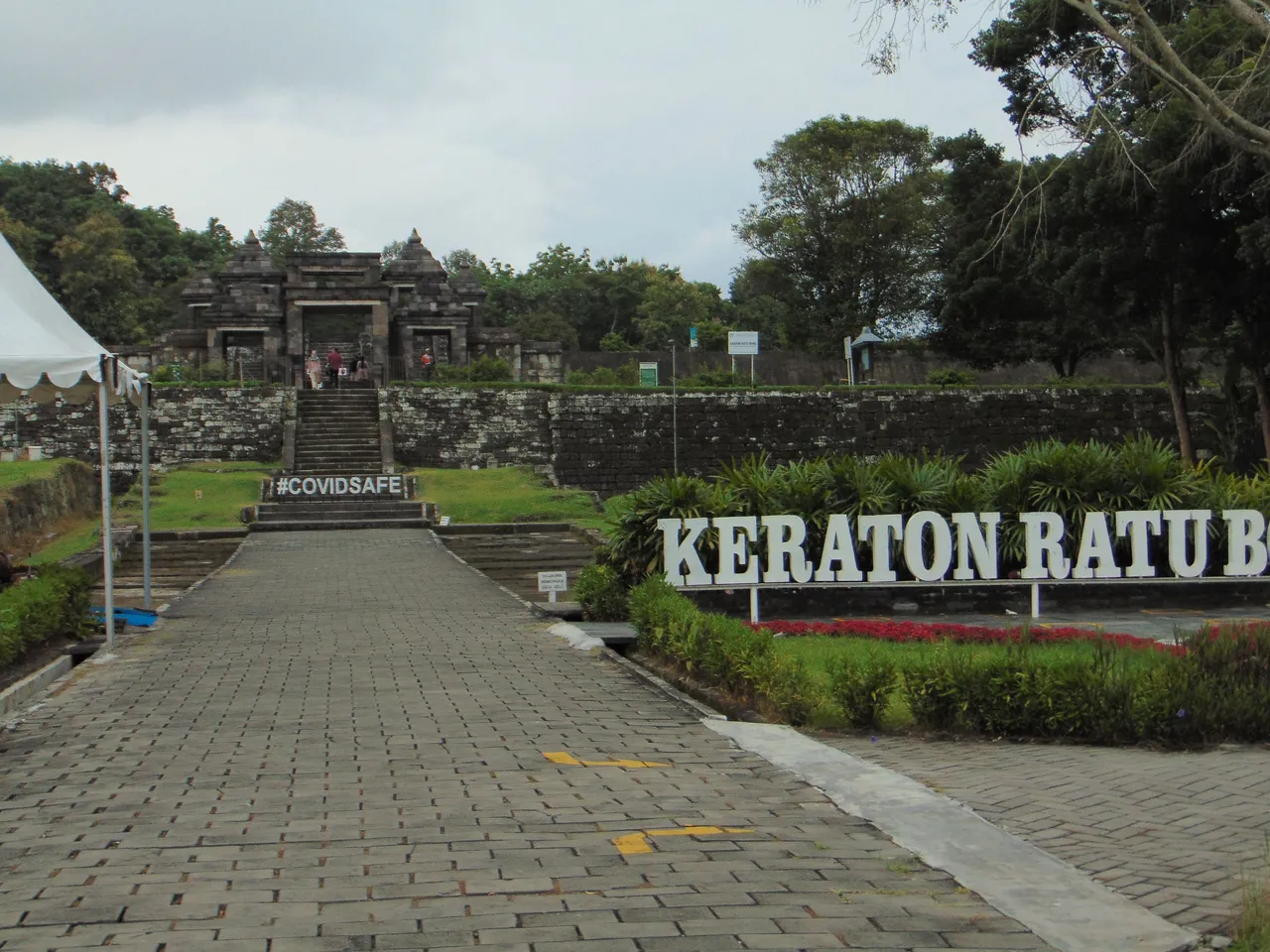
After we reached the first gate, there were two women wearing batik t-shirts who asked us, “ do you want a guide?”
Though I hesitated at first, I said yes to it. So then, the woman that I forgot the name accompanied us walking to the first complex of this palace. Before she could even mention any folklores, I began my conversation with questions and small talks of the temples I have visited. She seemed quite impressed with my journey thus far.
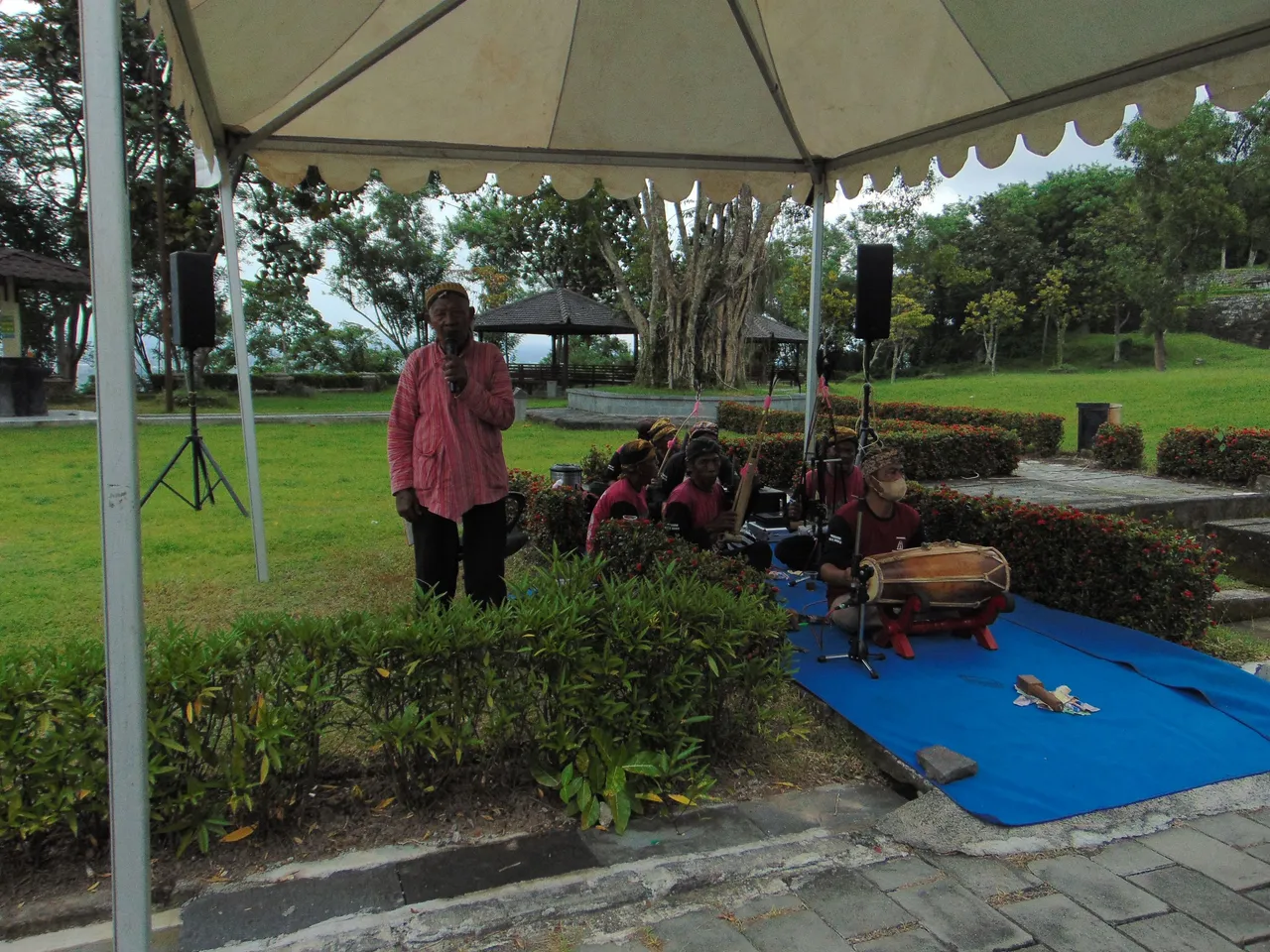
Before we got to the complex, we were greeted by a group of traditional musicians who played some javanese folk songs.
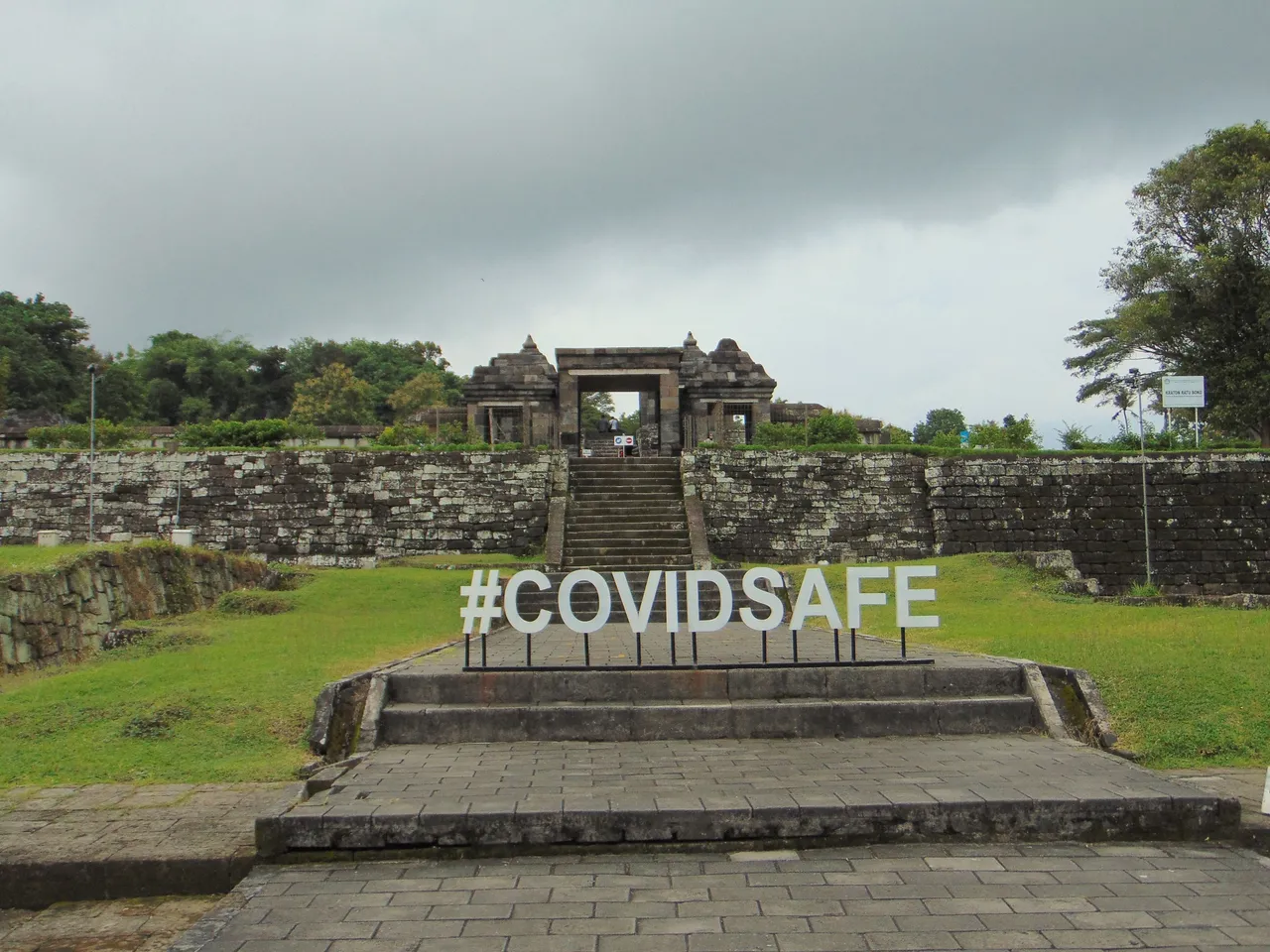
Then, we were greeted by two massive sign that said Keraton Ratu Boko and another one saying “#Covid Safe”. This place was among the first few tourist spots that were opening in the city. So, perhaps it was why they put those huge signs just before the main complex of the palace.
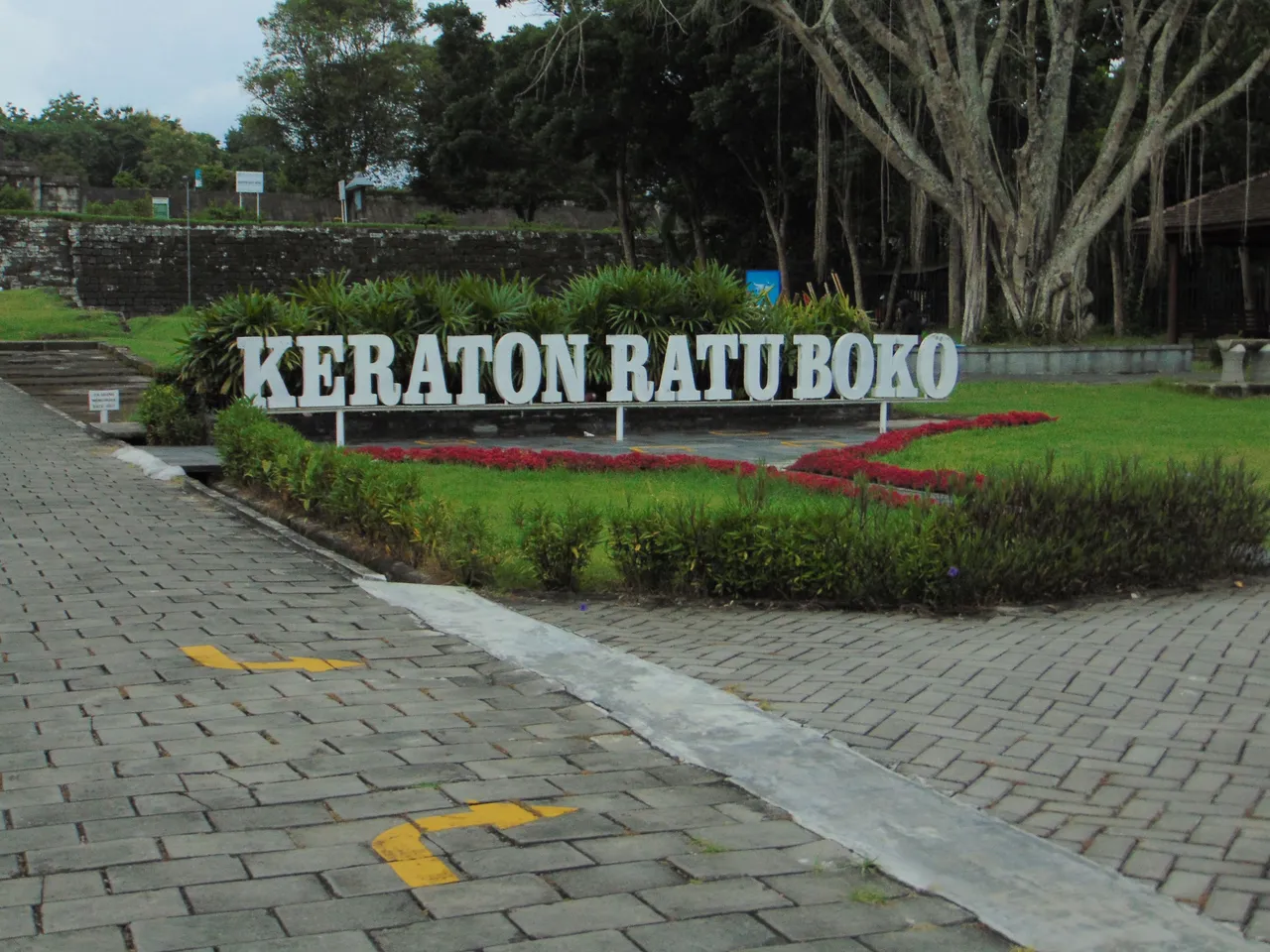
I have been to this place many times but never without a guide. It was my first time going with a guide who told me that the way to explore the place is not straight through the gate but circling the gate.

So, I followed the woman who told us about the place. She mentioned that it was first not a royal palace but a buddhist monastery. I was quite surprised about it because all I ever knew was this place was a royal palace. The guide continued mentioning about prahasti that was found which mentioned about this place that was built around the 8th century. Then, after the Sanjaya dynasty took over and since they are Hindus, they adjusted the monastery with the flair of hinduism and hindu deities.
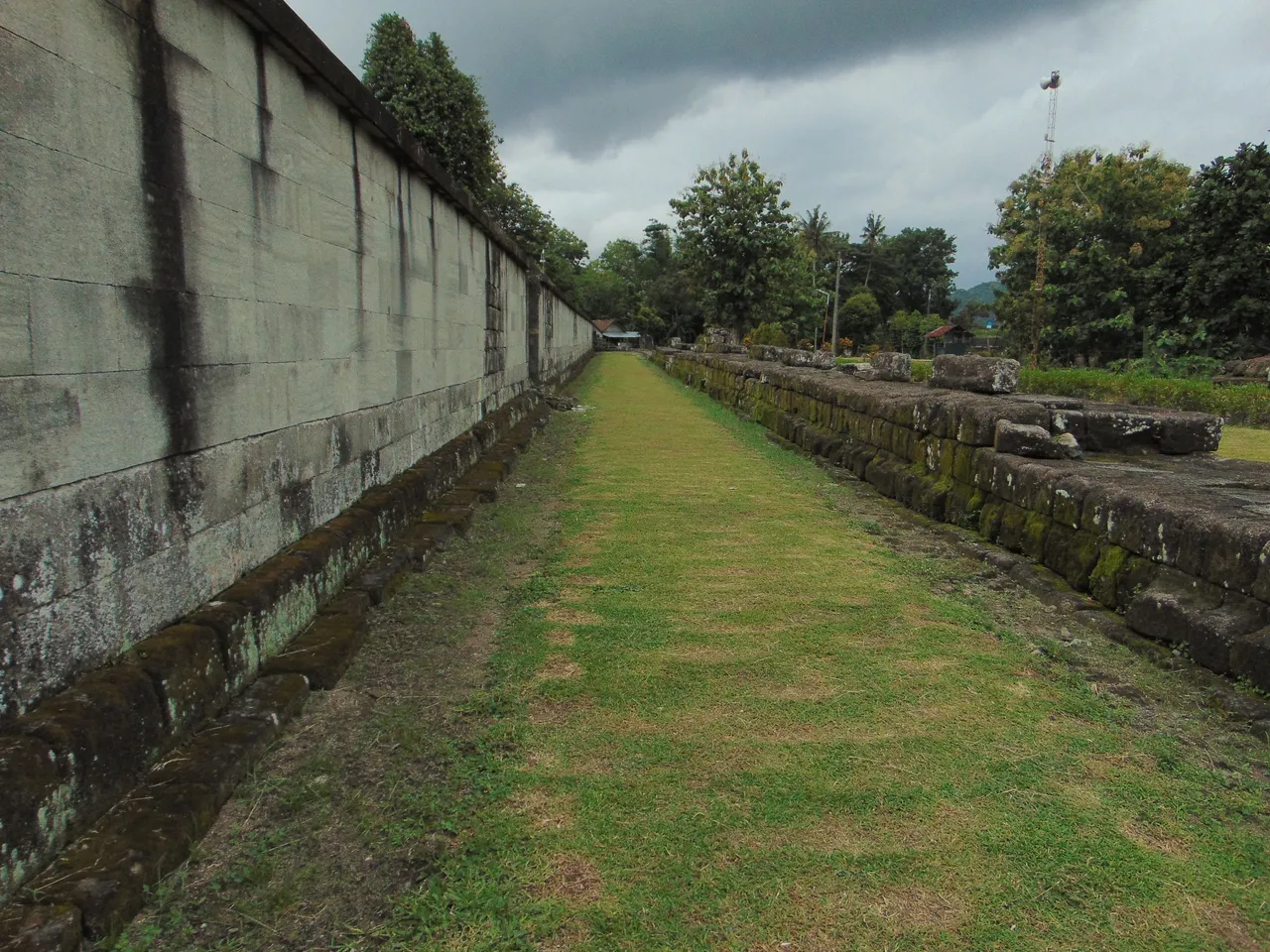
The first place that we got to visit was the outer wall. In this wall, we learned about the difference between the original stone and the replaced stone from it. The stone of the wall isn’t made from andesite like the other temple, rather it has limestone as there is a hill of limestone nearby the complex. The guide also told us about the deep nail mark that could indicate that it was not the original stone, rather a replaced stone. She told us that she rarely tells that to visitors as the story told is mostly folktales rather than the facts.
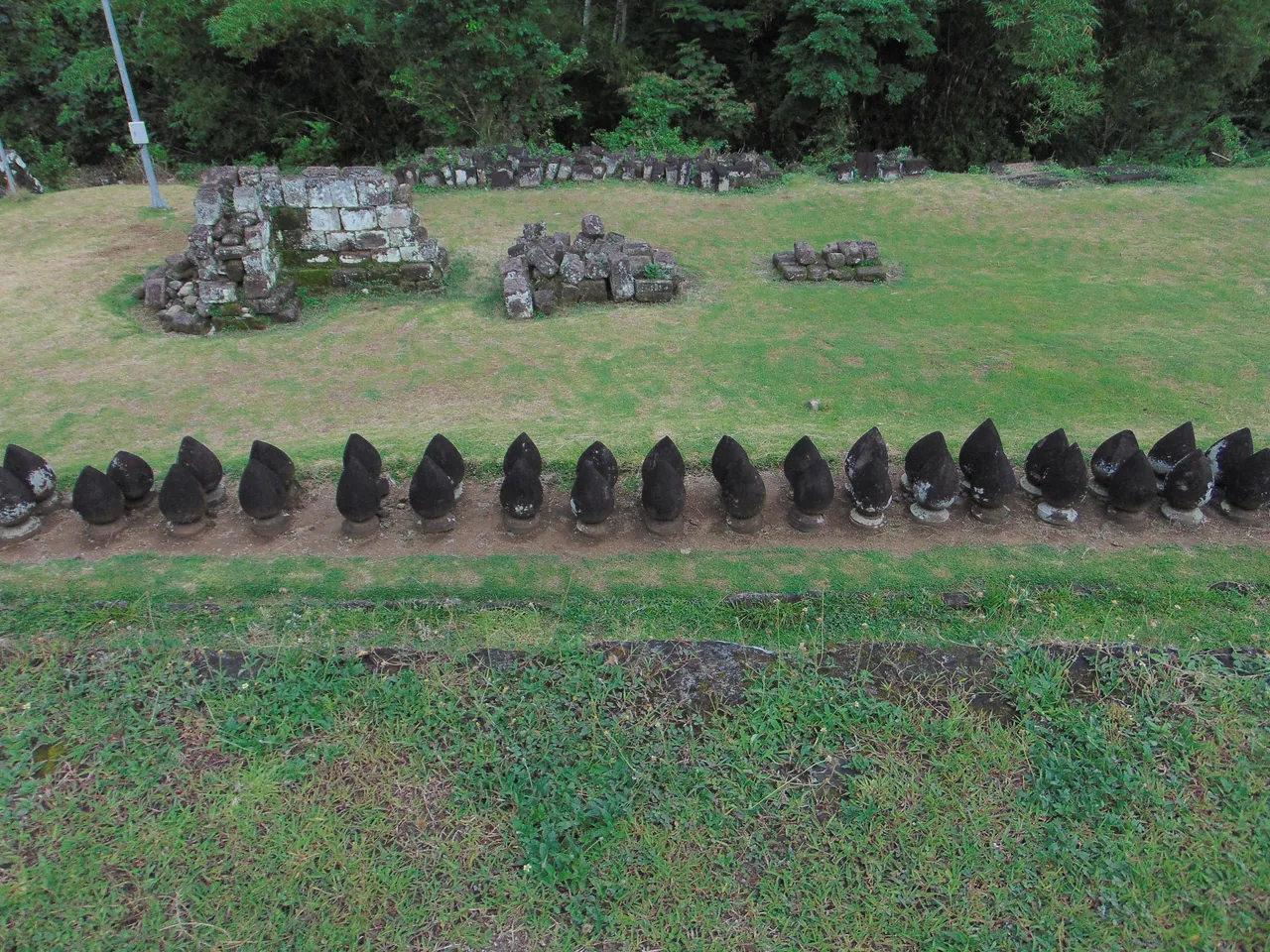
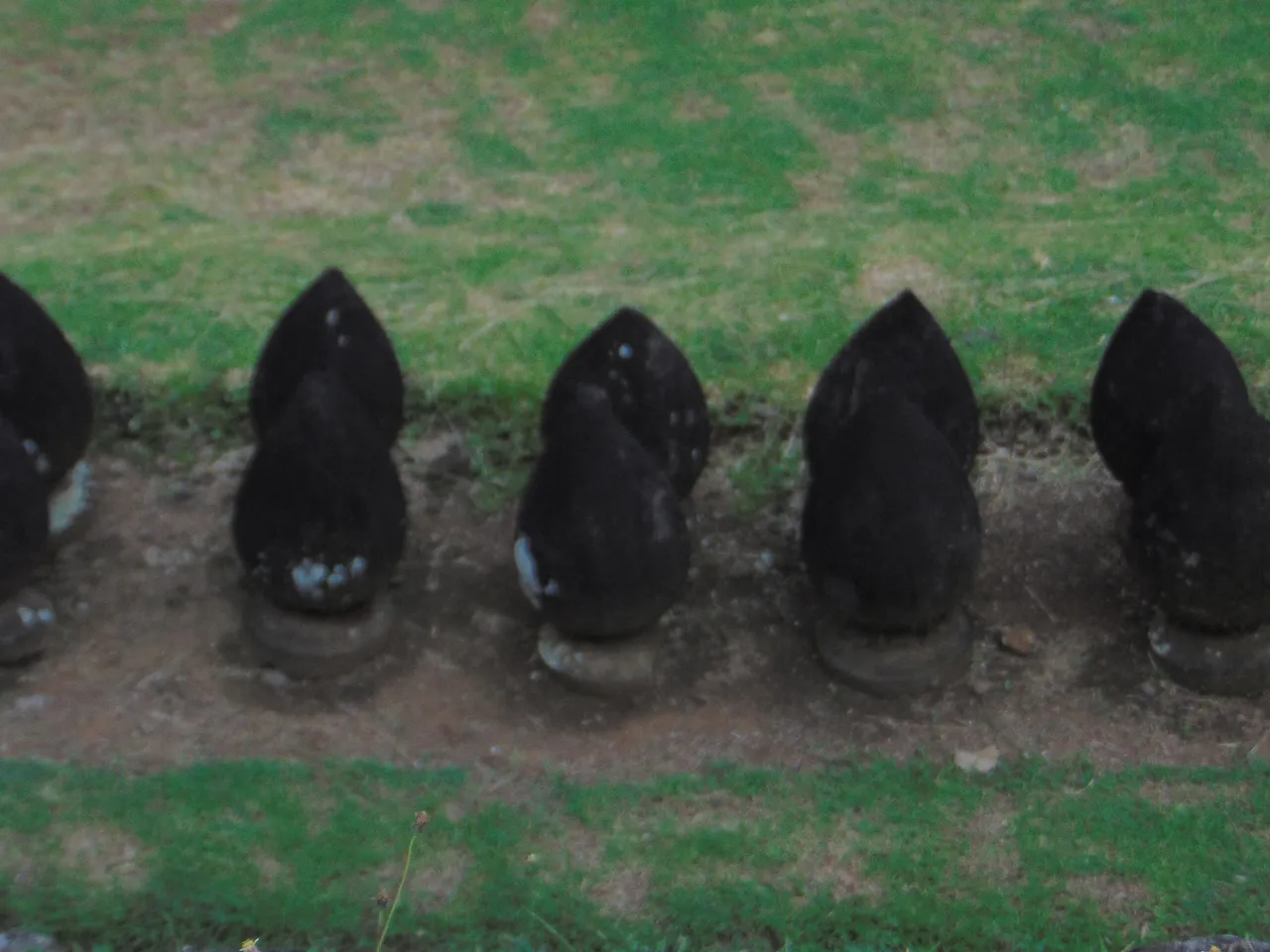
As we walked further north, we saw some Buddhist ruins that were located in the restricted area. I could only take the picture from above the ground. The guide mentioned that it was all original stone from the excavation result.
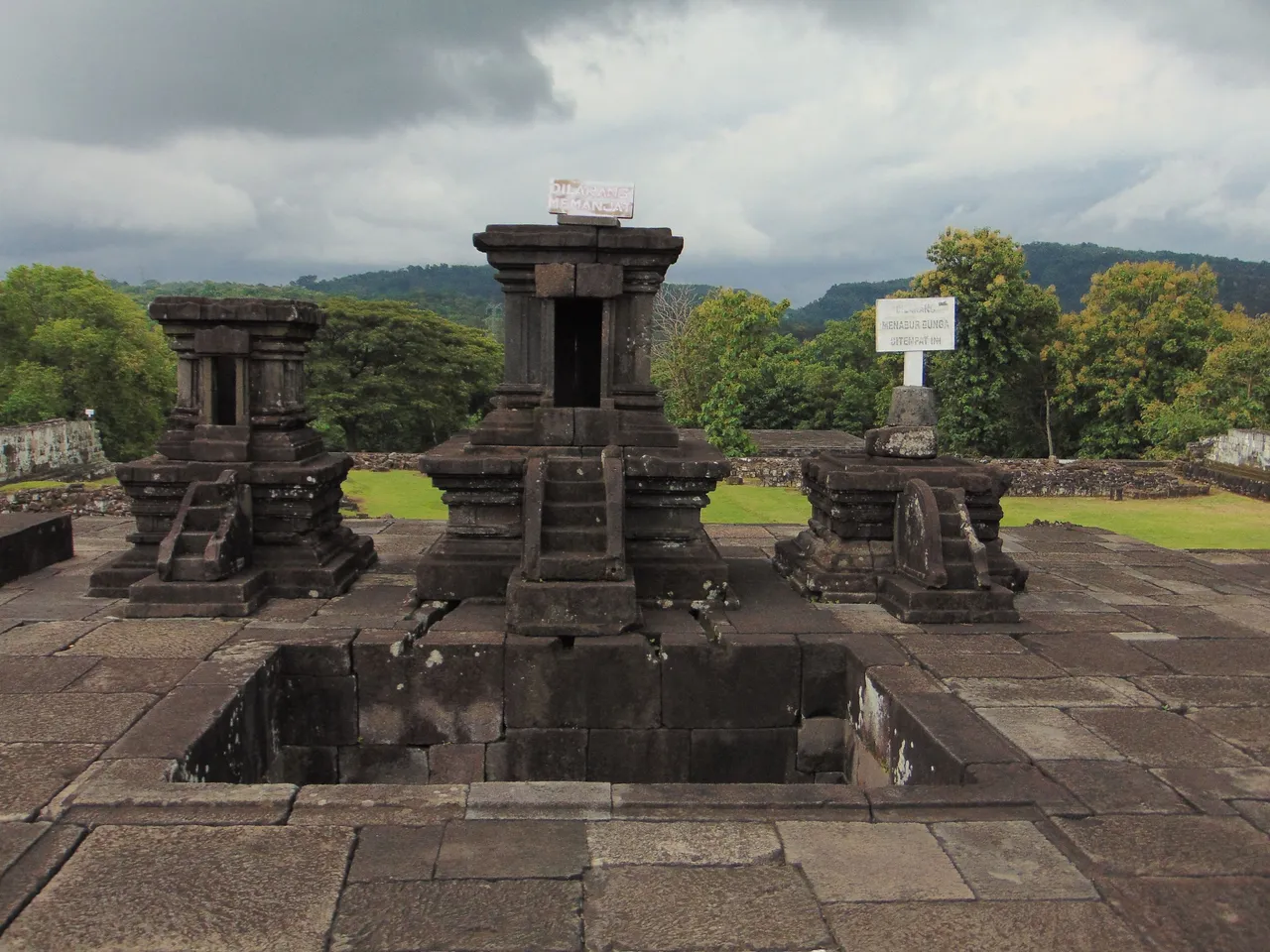
As we walked further, we saw three small hindu temples. The temple was dedicated to the three major hindu deities, shiva, vishnu and brahma.
In that small temple, there is a well which still functions for the hindu to pray. Some hindu are also coming to this area to pray. And next to it, I would say is also an interesting ruin.

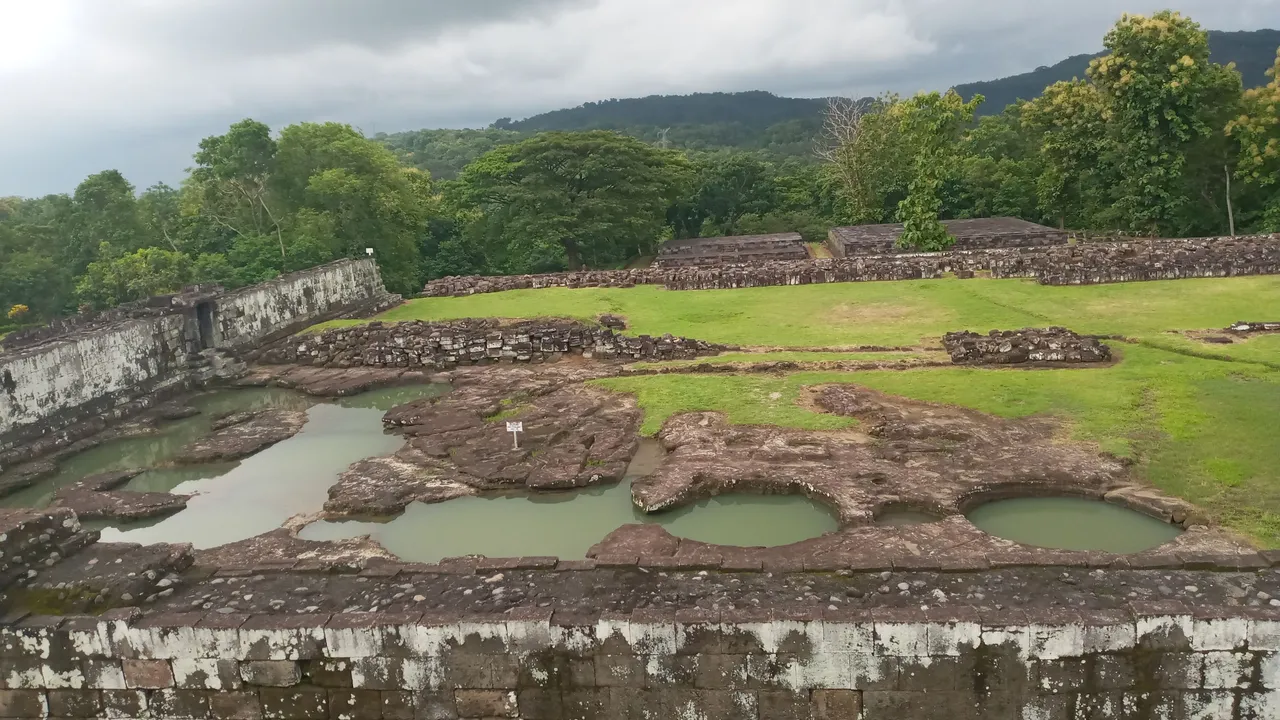
The guide said that it was the ruins of the royal’s pool where the servants and the knights were taking a bath. The ones for the female servants are more shallow than the knights’ pool. I could only imagine how cool the place was during its glory.
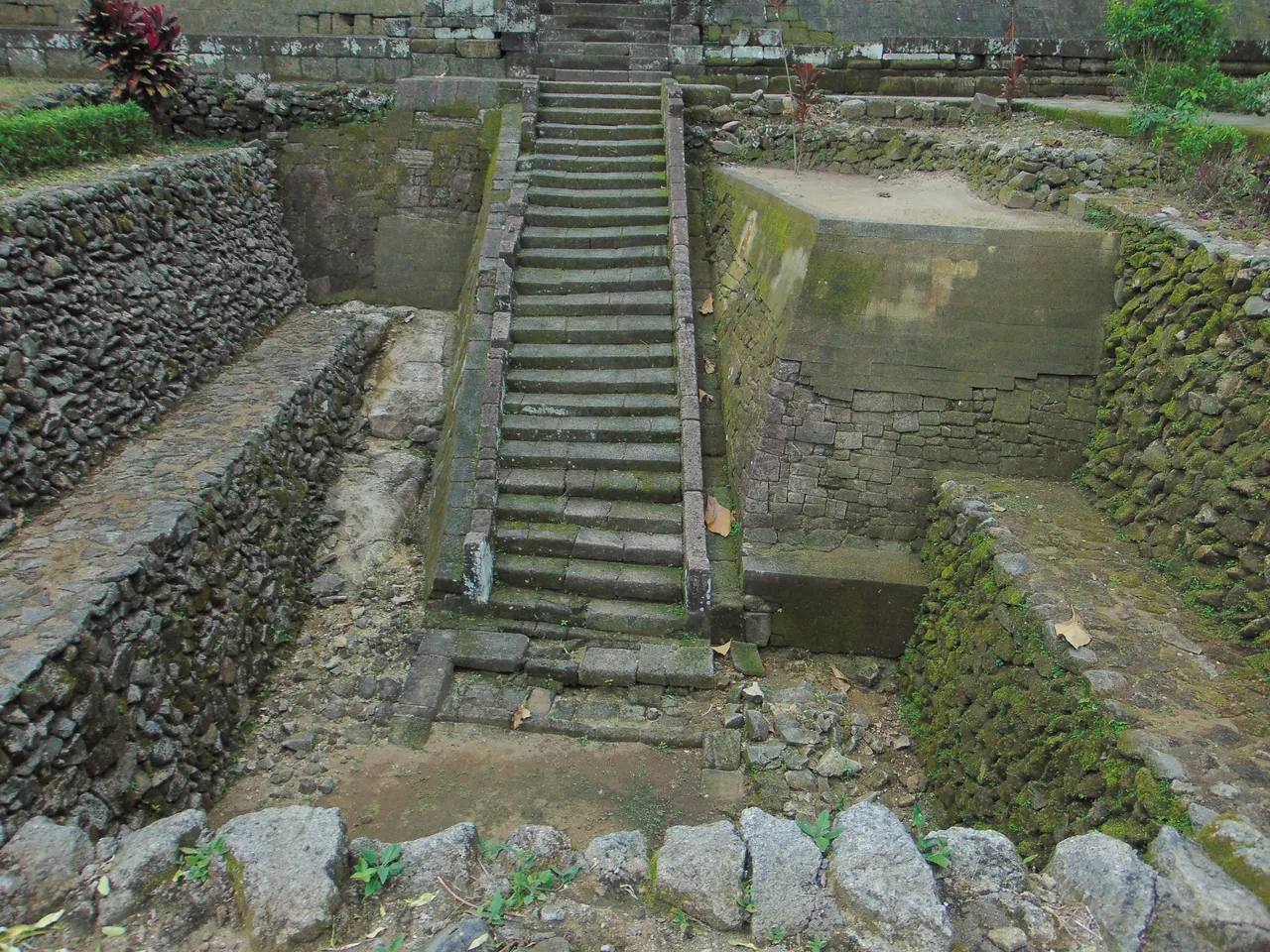
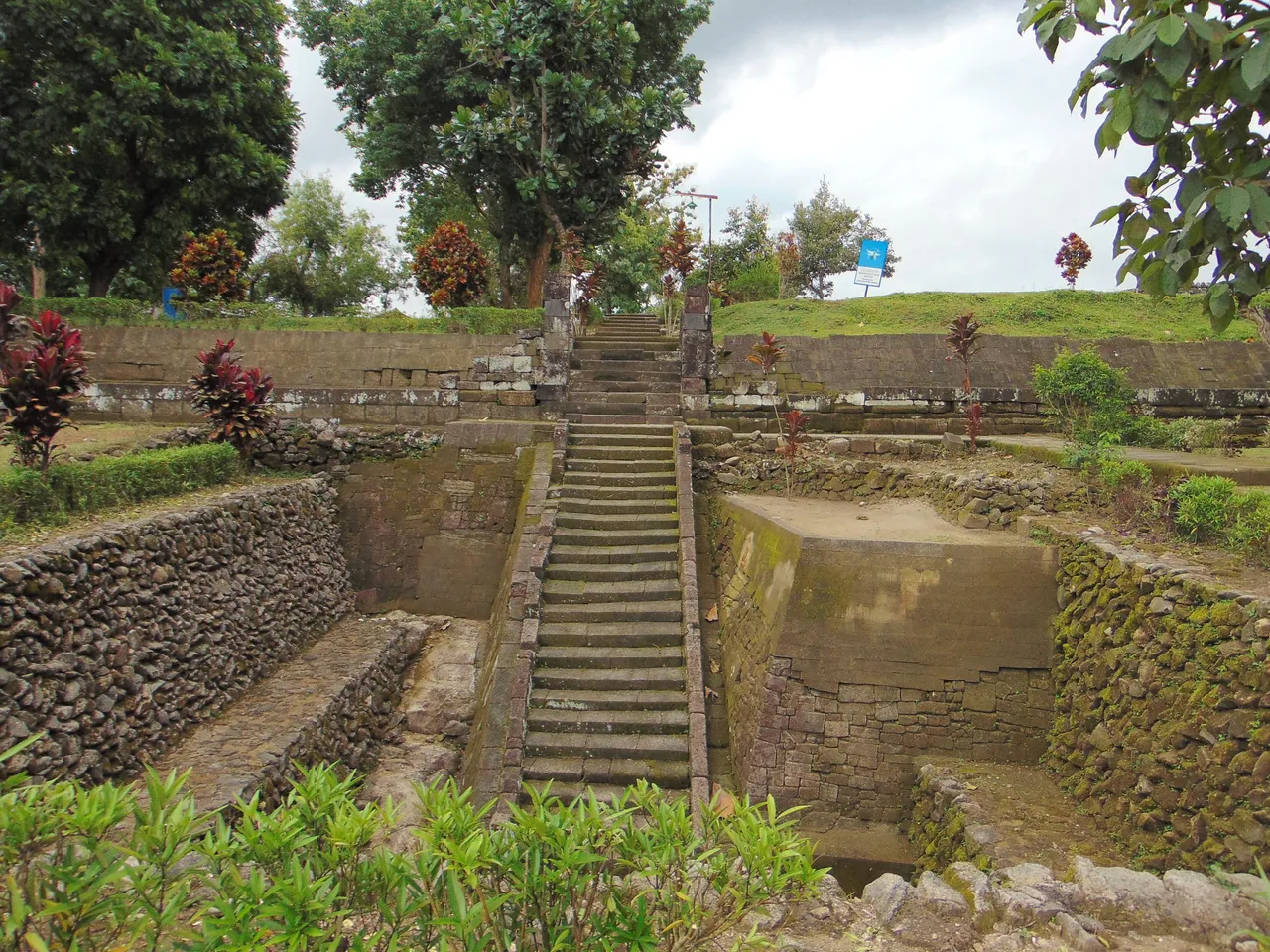
Then, after we passed through the pool, we walked to a place where there were stairs that seemed to lead to an underground tunnel. However, there is no further excavation effort to get to know where these stairs would lead. My friend and I could only guess that it could be either a hiding place or an armory.
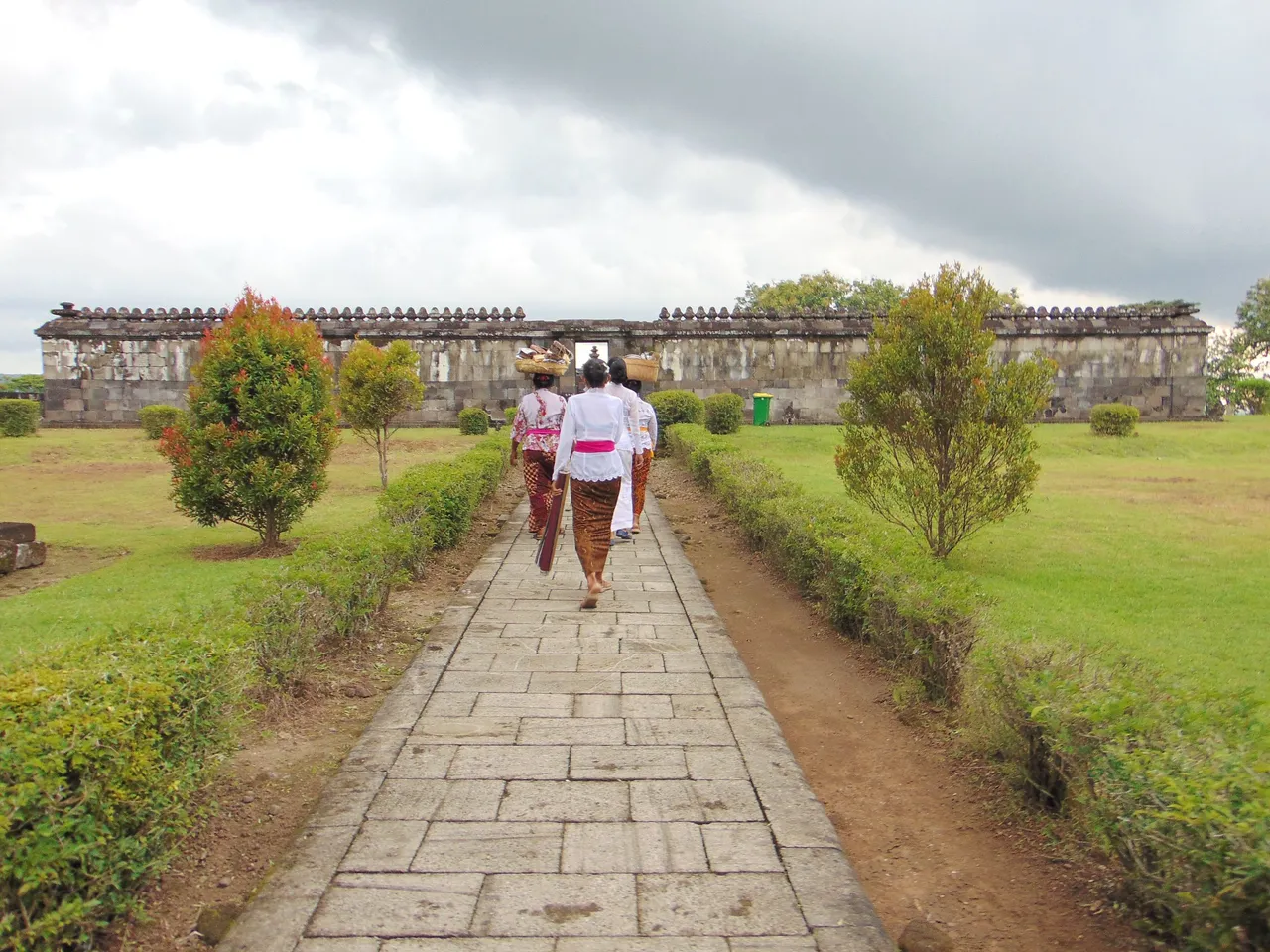
From a distance, we saw some people carrying offerings. They were the hindus that perhaps travelled all the way and went through all the hassles just to pray inside this complex. The guide told us that the administration's work to pray in this place is not easy. So, I reckoned that they must have some kind of big wishes.
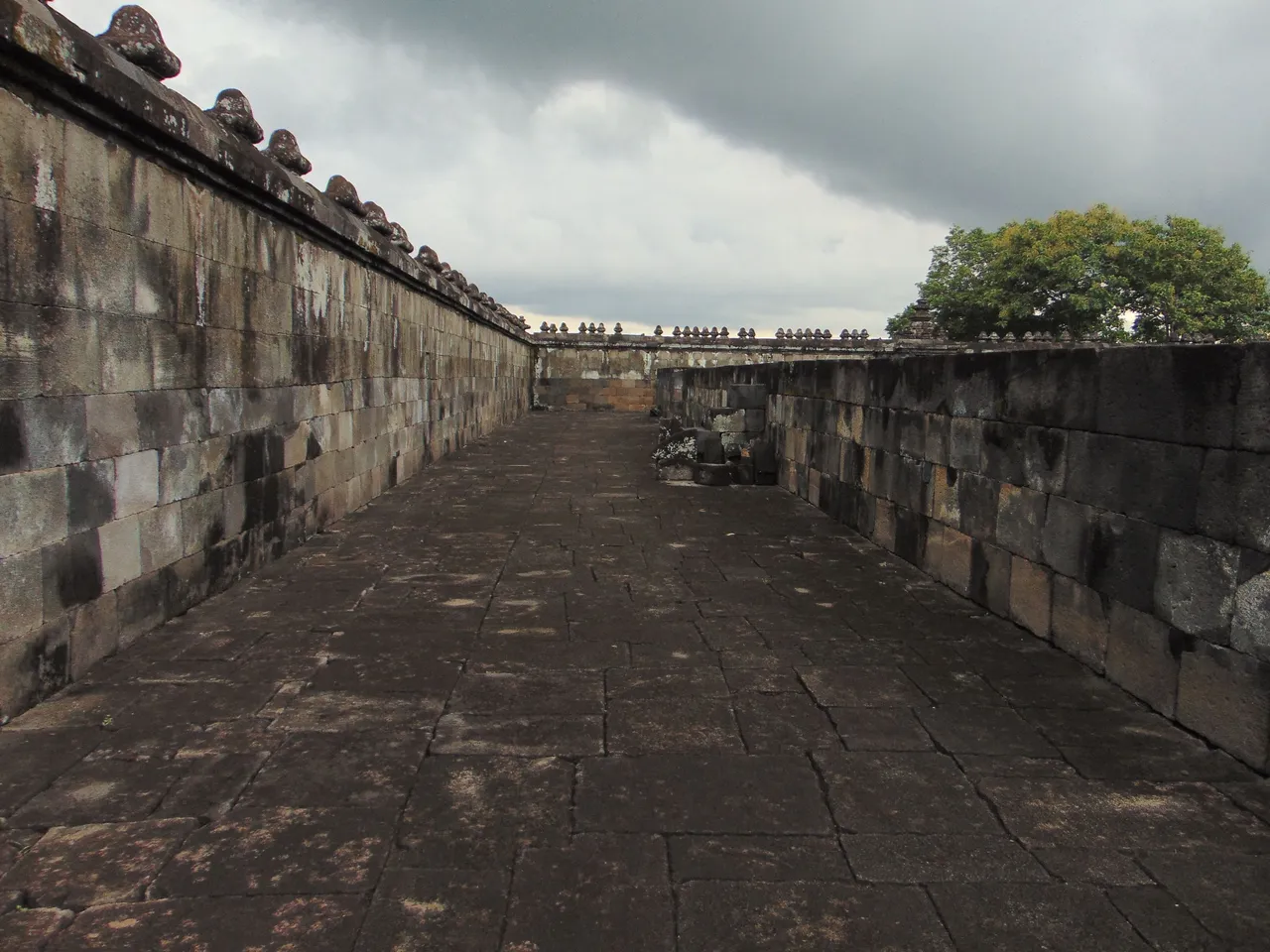
They actually were also going to the spot where it said the king used to live. The guide told us that in the king’s chamber there used to be roofs as some holes could be seen and that it could indicate a pillar to support the roofing. We all got to the platform and observed the area from above it. The view was indeed mesmerizing.
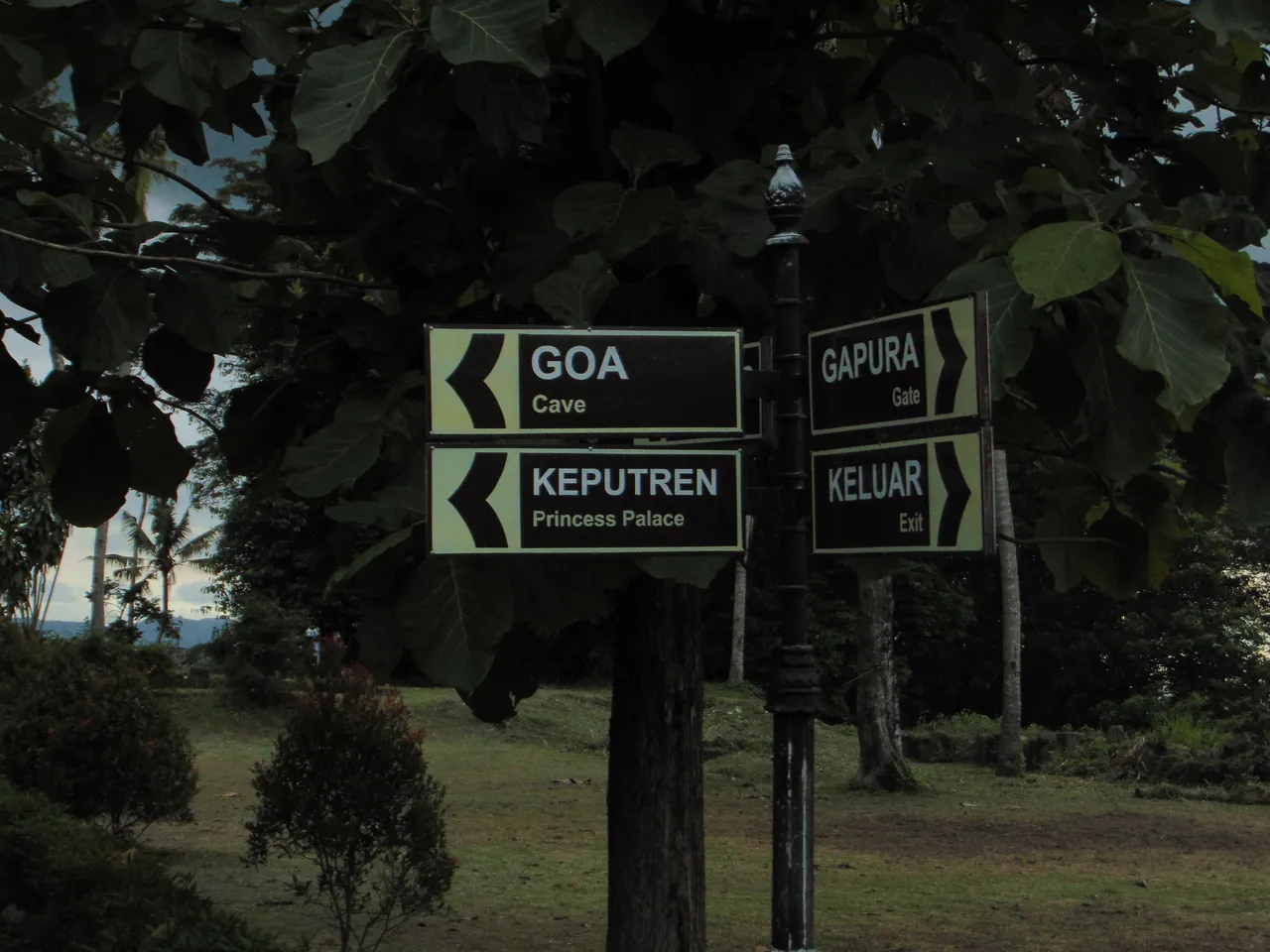
After we got down, The guide was offering us to check the cave which I excitedly said yes to. I was always curious about this cave and I could finally see it. Going to the cave was quite a walk. I thought it was near but apparently it was located just beneath the limestone hill. There were two caves in this place, the one below and one is located a few more stairs. Since the rain was starting to pour down, we only got to visit the lower cave.
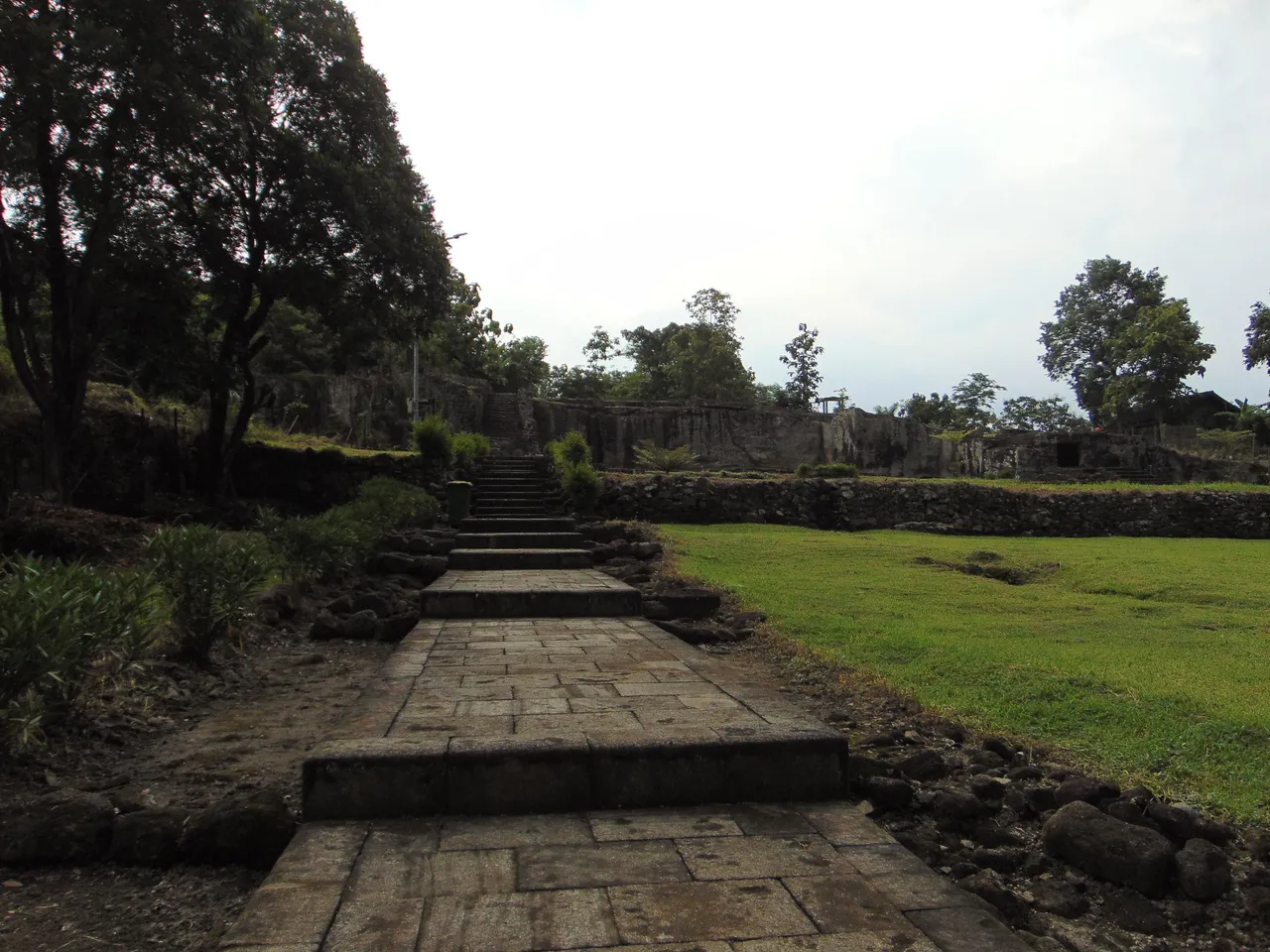
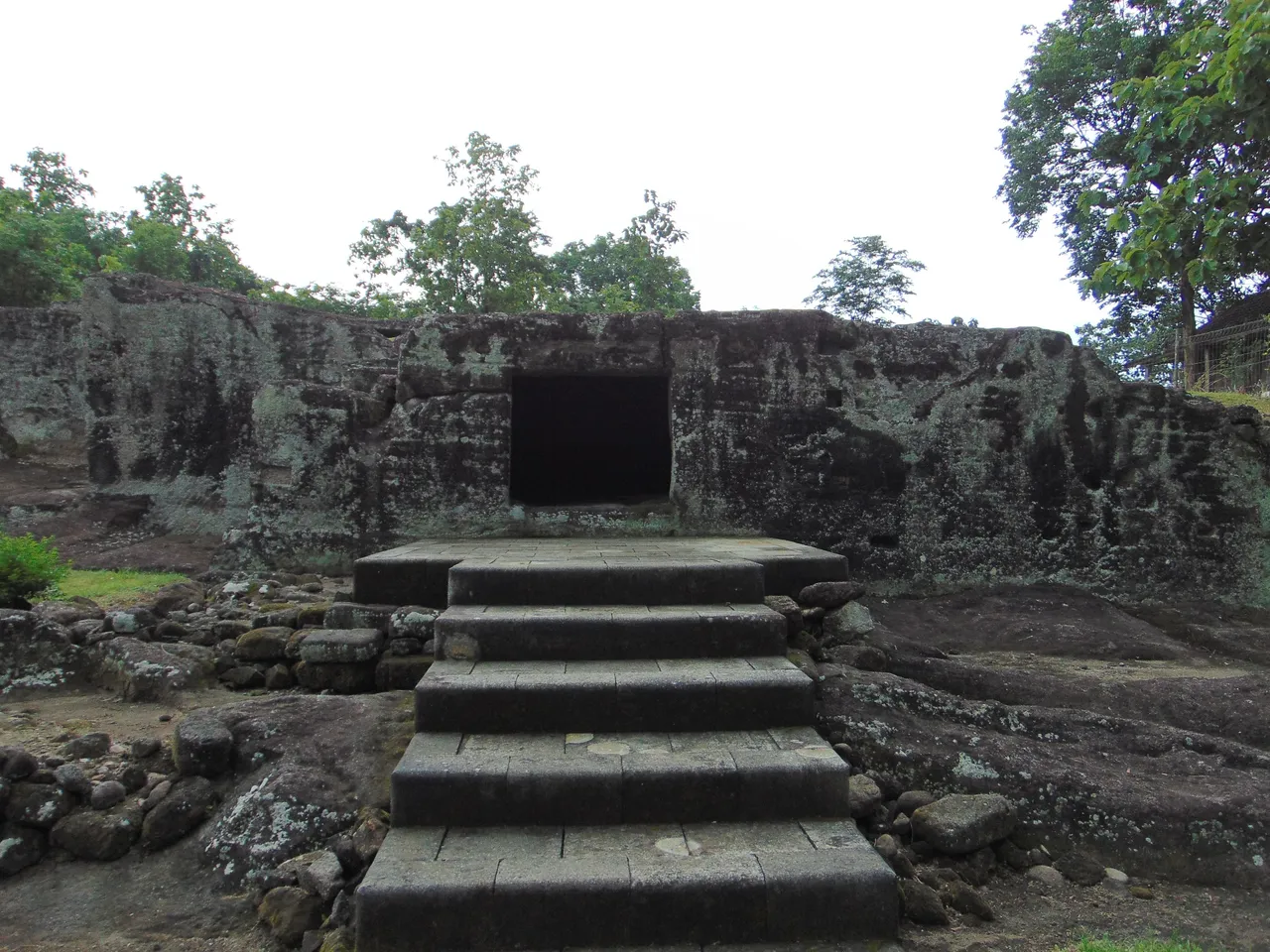
The guide mentioned that before this place was gated, people like to scratch the surrounding area. The cave was also small. I didn’t know how one could fit in there but once i peeked inside, it was quite large for a praying room.

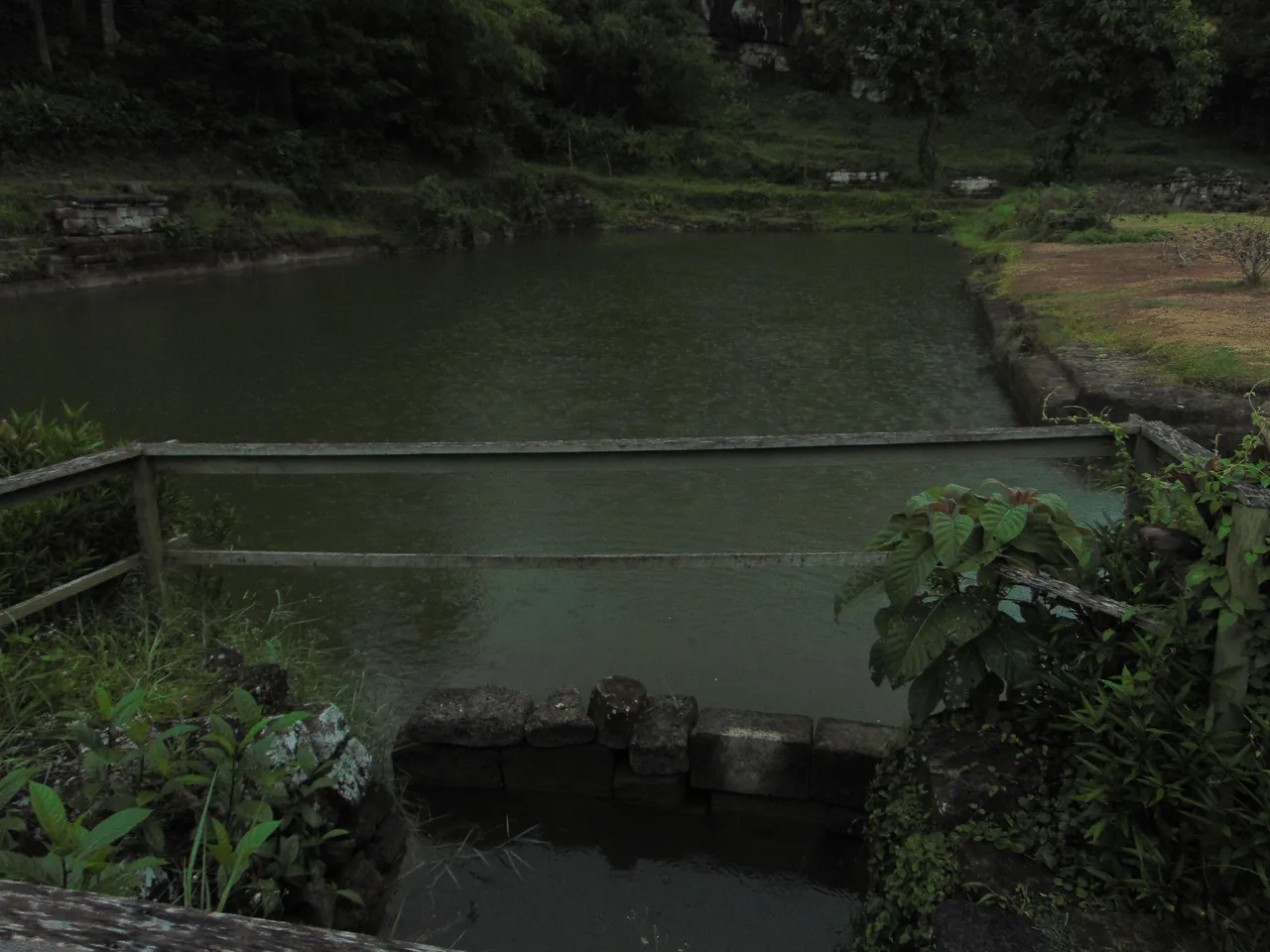
The rain just got heavier and as we only brought one umbrella it was quite difficult to navigate the palace. But that didn’t stop us from exploring supposedly the water storage. This place is quite far from the river or the sea. Hence why, they rely on the rain for their water supply. This midsize lake was where they store the water during the rainy day and use it during the drought.
And just behind it, there is the temple called Candi Pembakaran. Though now, it’s only a square terrace, it is said to be the place to worship Agni, the goddess of fire. And at first, I thought it was a place where they would cremate people because pembakaran could indicate the process and in english, that could be translated as incineration. From this spot, one could see the city and the people’s houses.
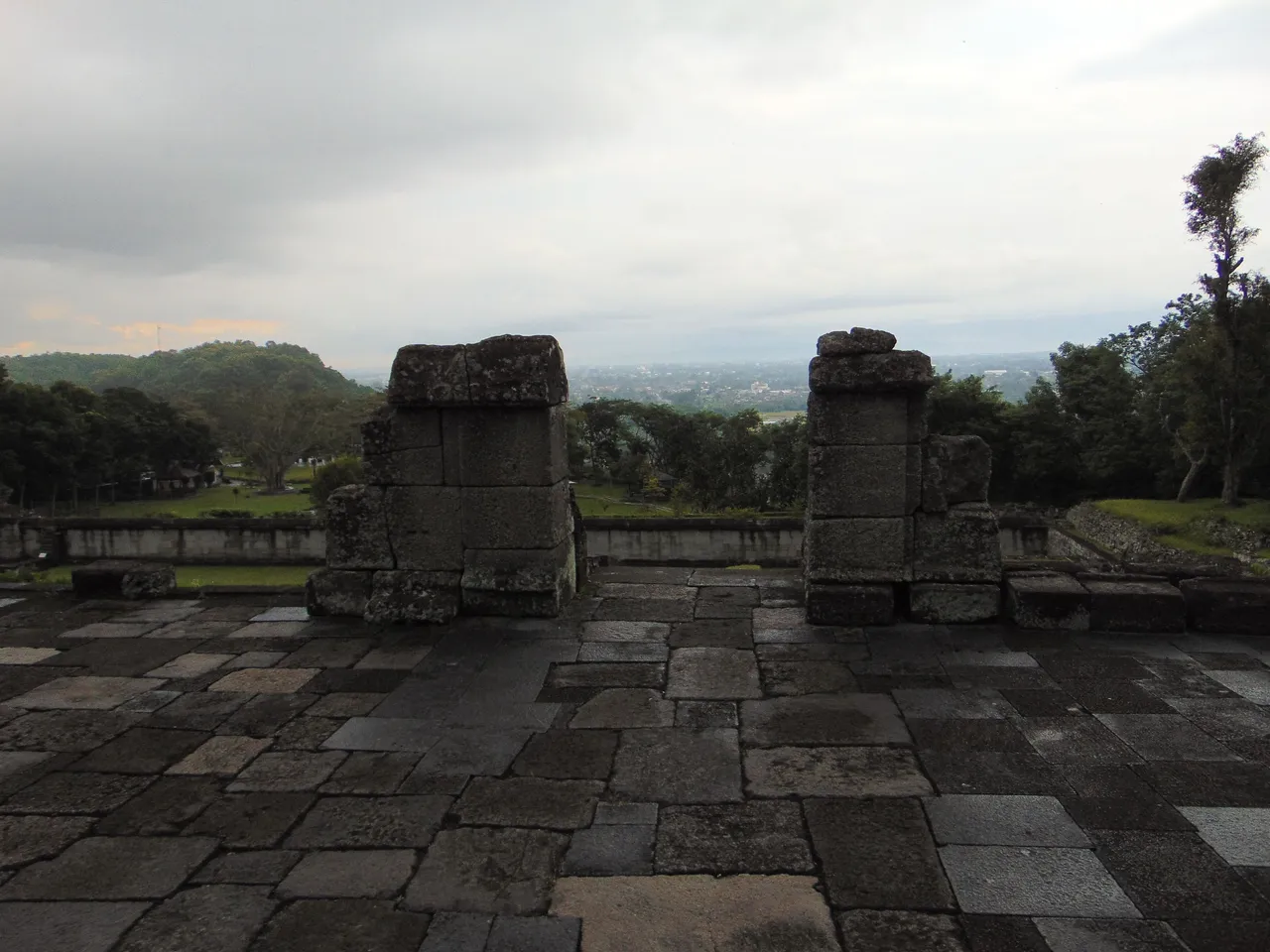
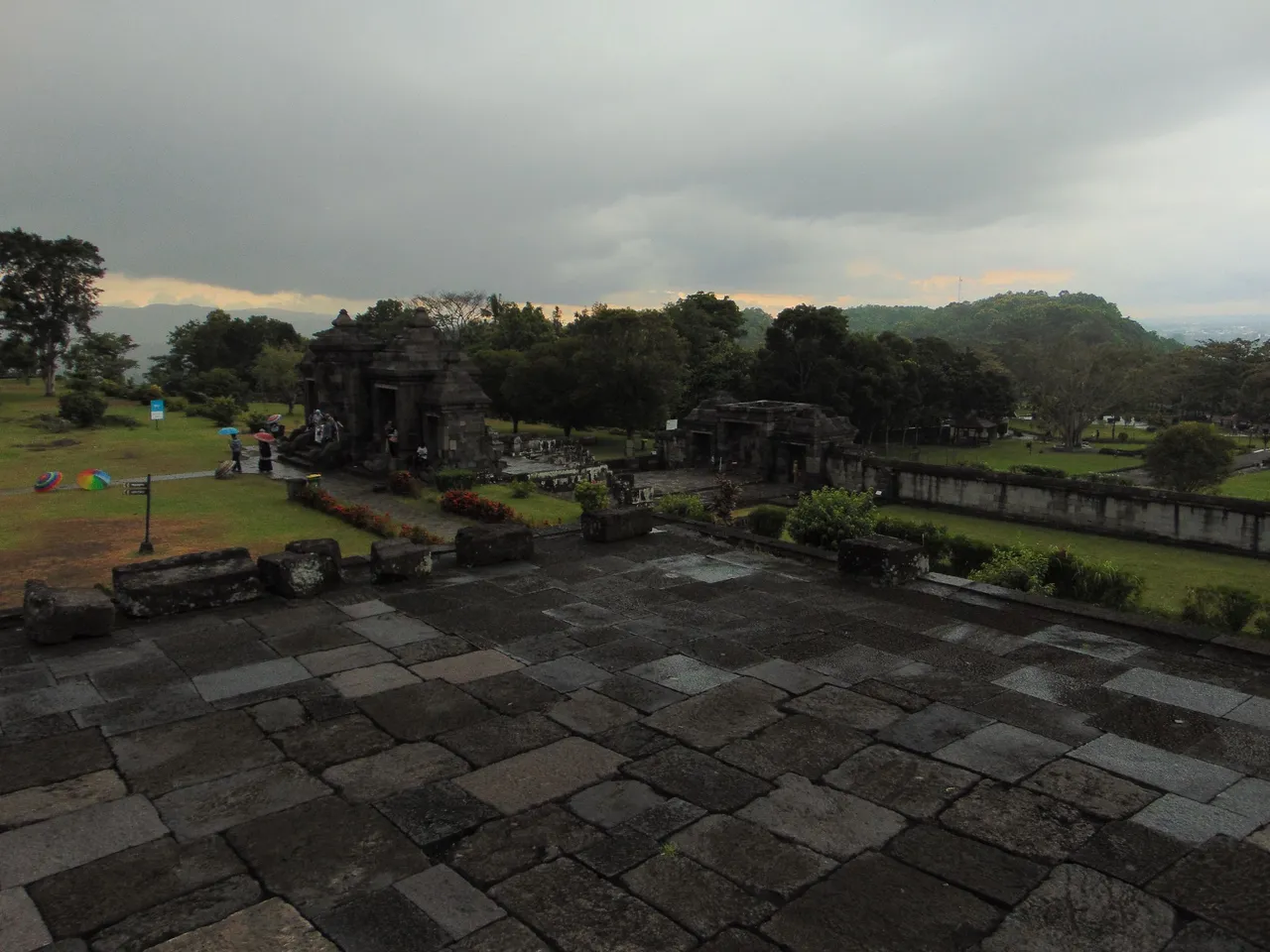
Before we bid goodbye, the guide told us that the moving of ancient mataram from central java to east java wasn’t something rushed. It was well-planned as they foresee that the volcano mountain would be the end of them. That was why there were little artifacts that could be found in the area.
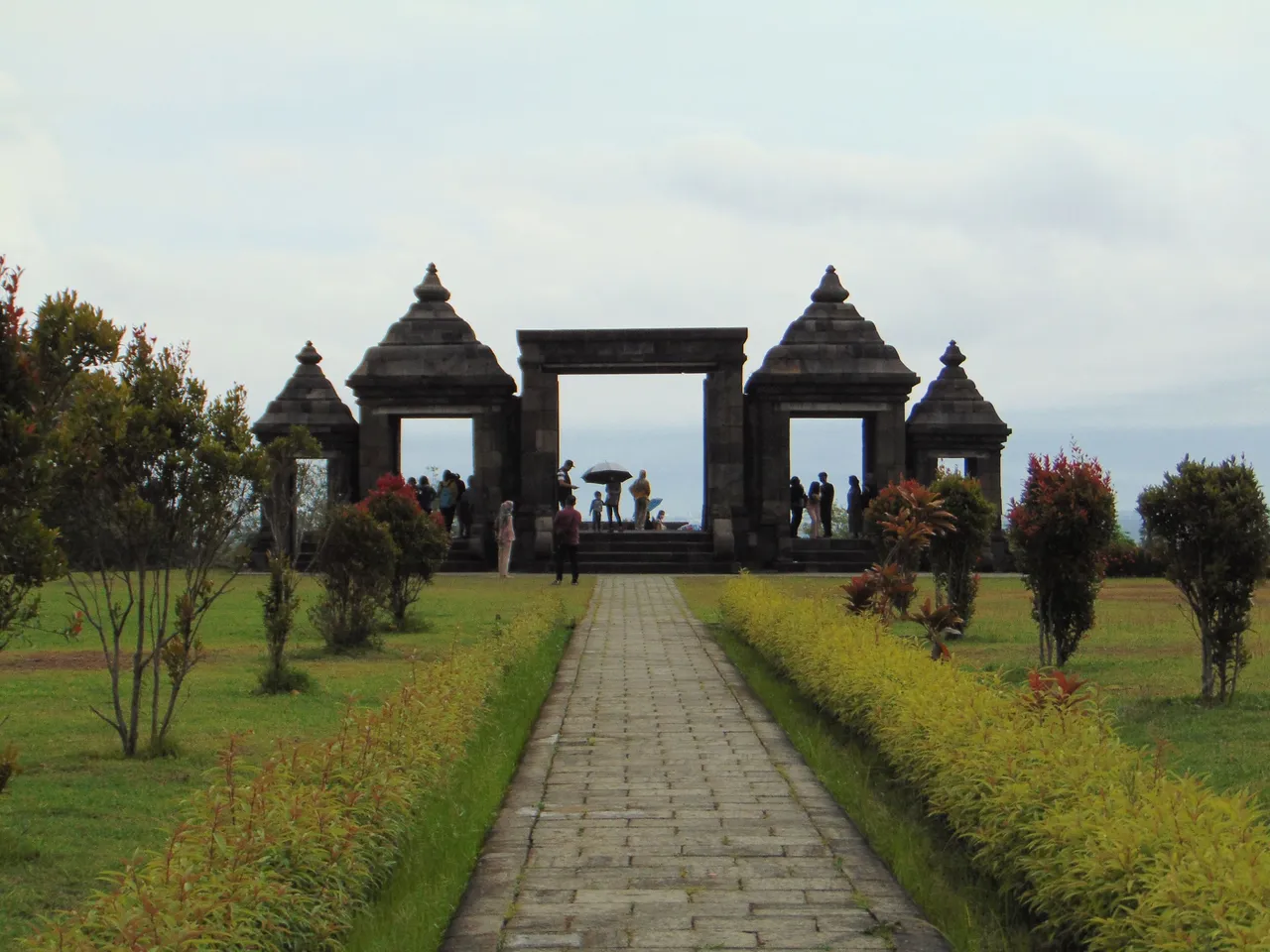
The moving to the east is also a form of expansion as the east has more rivers and seas to expand relationships with other kingdoms. This is quite correct as Majapahit was ruling the sea for quite a while and was able to expand the kingdom to madagascar.
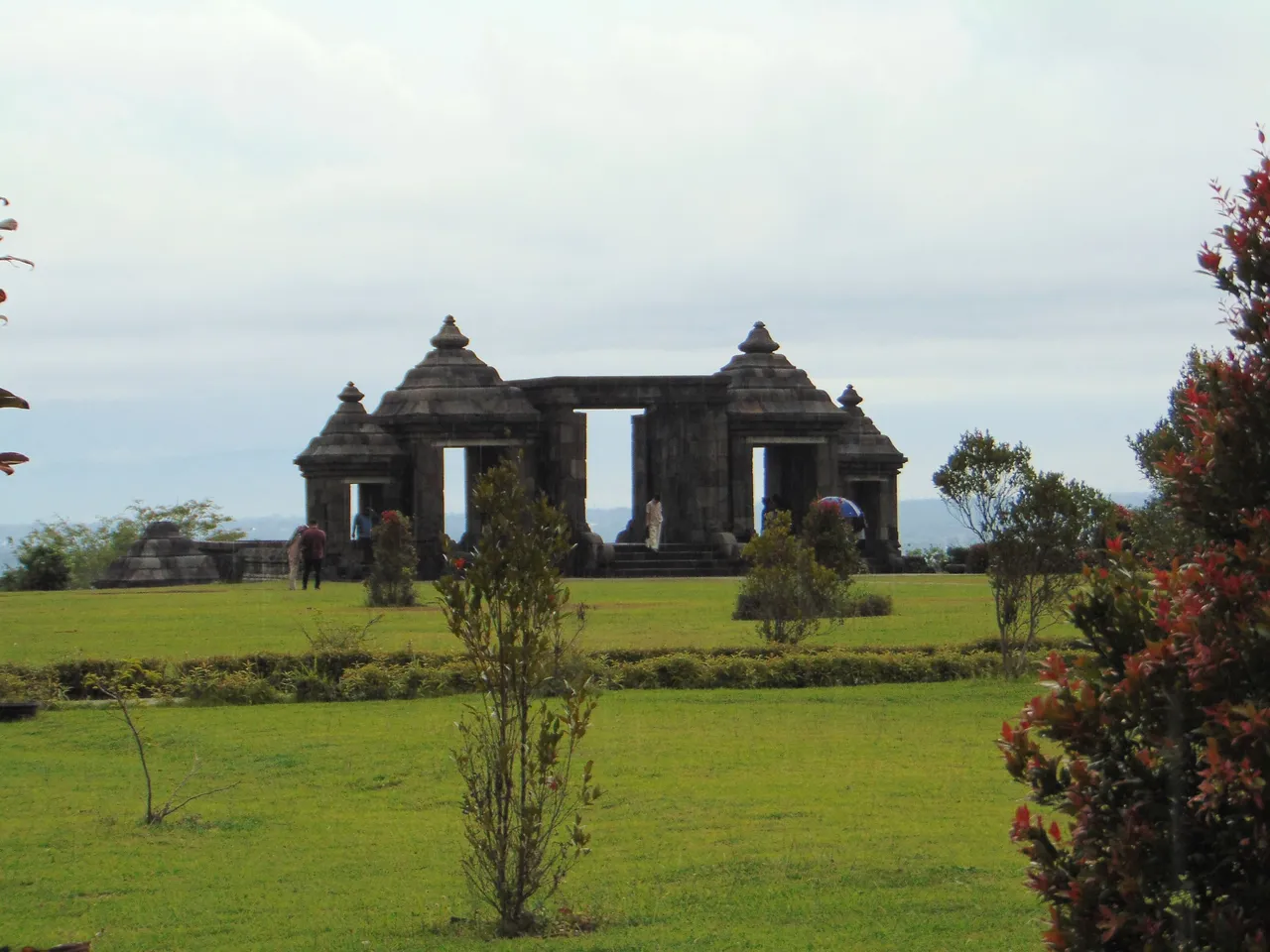
Candi pembakaran was the last time where the guide accompanied us. She bid goodbye to us and we started to explore the entrance area where many people often take pictures of. From a distance, I still heard chatter about the folktales and the don’ts while visiting this place. I just smiled and i was happy to know more about the history of the place and the reason why ancient mataram was moving from central java to east java before it was all just a history.
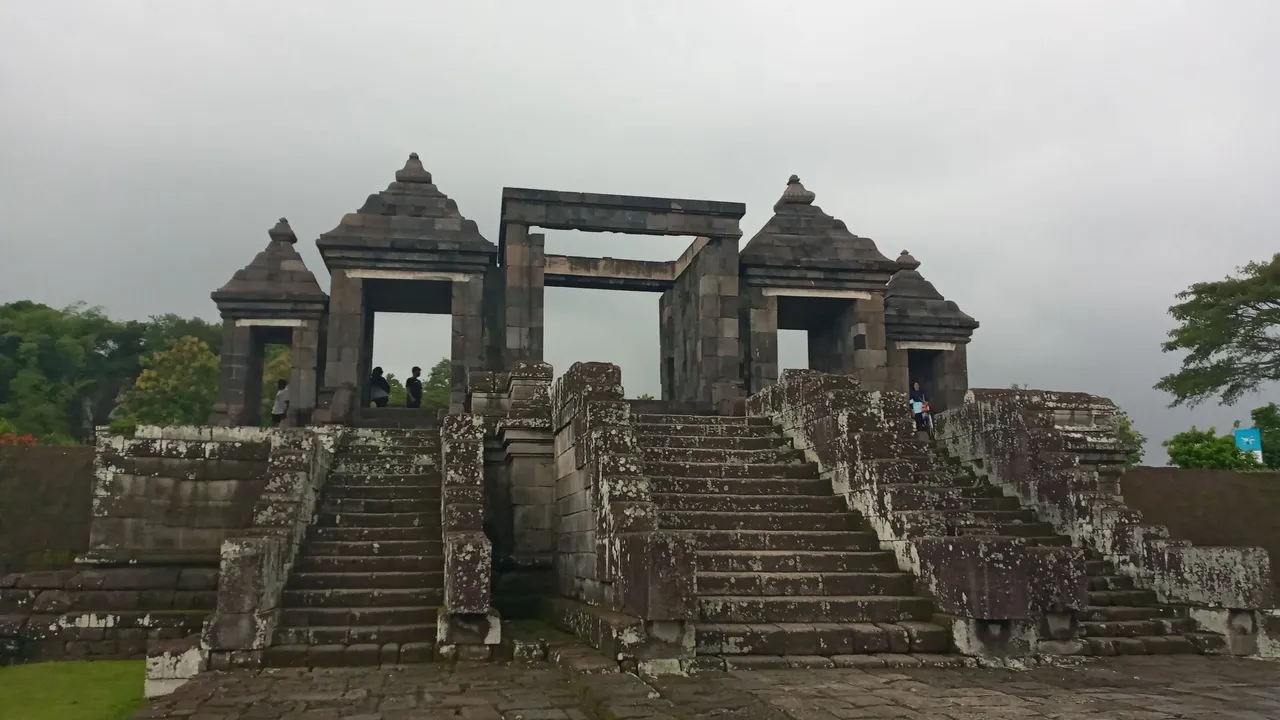
The mystery of past life and architecture captivated me more than anything. It is like re-learning and visiting all the places I could only see in textbooks during my school years. I never thought that I would do this kind of mini expedition but I did it. And since I heard about Liyangan, I have been wanting to go there. It was like one door led to another. Maybe I could go there this year and if I am lucky, I could see the excavation in progress as I heard it is still in-progress. Anyway, thank you for making it this far. I hope you find this informative and amusing. See you in my next mini expedition.

Mac's Pinmapple Travel List


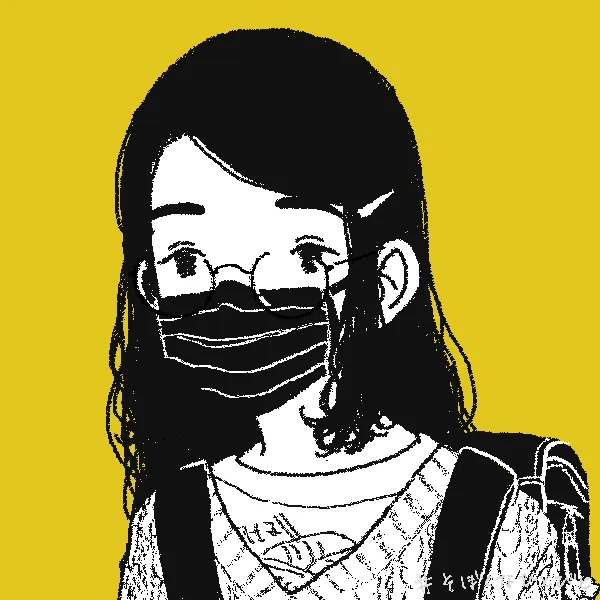 | Mac is a jack of all trades. A typical introvert in love with literature, books, technology and philosophy. She is also so into nootropics, productivity, minimalist lifestyle, cybersecurity, and languages. Other than that, she is passionate about cooking and traveling. In her free time, she enjoys learning various things. If you like her content, don't hesitate to upvote, leave a comment or a feedback. A re-blog is also appreciated. |